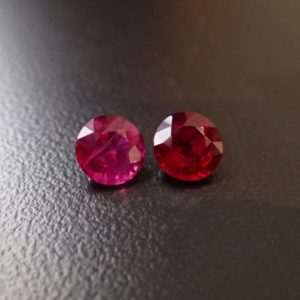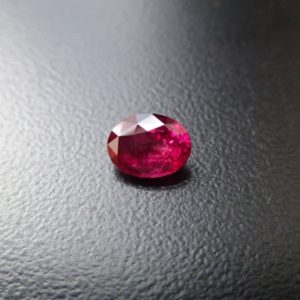Ruby
Our Ruby Collection
Treatment / Enhancement
Today the majority, but not all, rubies are heated to eliminate some of the purple hues, inclusions and blue zoning. Most of the heat treatments are permanent and do not effect the ruby’s structural integrity. However, rubies can have a residual amount of melted borax within the stone. If the customer is concerned with this residue, a reputable gemological laboratory report will disclose the exact amount in the stone.
There are two treatments that have become widespread in the past ten years. One is a very high temperature diffusion of beryllium into the ruby that effectively dyes the stone red. This treatment is permanent but does introduce elements not found in the original gemstone. Boston Gems chooses not to carry any beryllium gemstones.
The second treatment is filling lead glass into rubies. A poor quality ruby is heated at low temperatures in a lead glass bath to infuse the glass directly into the stone’s cracks and crevices. Some of these composite rubies have been found to actually contain more glass than ruby.
Origin
Traditionally the finest rubies have come primarily from the Mogok area in Burma, however stones from this area have became increasingly rare. Then Thailand became the major source until the 1980’s when a new discovery in Burma produced a large ruby deposit that requires heat treatment to eliminate inclusions and blue zoning. This discovery introduced the widespread use of heating rubies to make them saleable to the public.
Recently rubies have been discovered in Kenya and Tanzania. It has not been determined how long these deposits will yield fine gemstones.
Folklore
Celebrated in the bible and ancient Sanskrit writings as the most precious of all gemstones, rubies have been the prized possession of emperors and kings throughout history. Ruby’s inner fire has inspired innumerable legends and myths, and to this day, no red gemstone can compare to its fiery, rich hues. It is believed that wearing a red ruby brings good fortune to its owner. Many people associate its brilliant crimson colors with passion and love, making ruby an ideal choice for an engagement ring.


Care
Ruby is second in hardness only to diamond. Because it is so hard, unless filled with the lead glass treatment, it may be heated, steamed or put into an ultrasonic.
Boston Gems recommends that any fine ruby be accompanied by a reputable gemological laboratory report.
